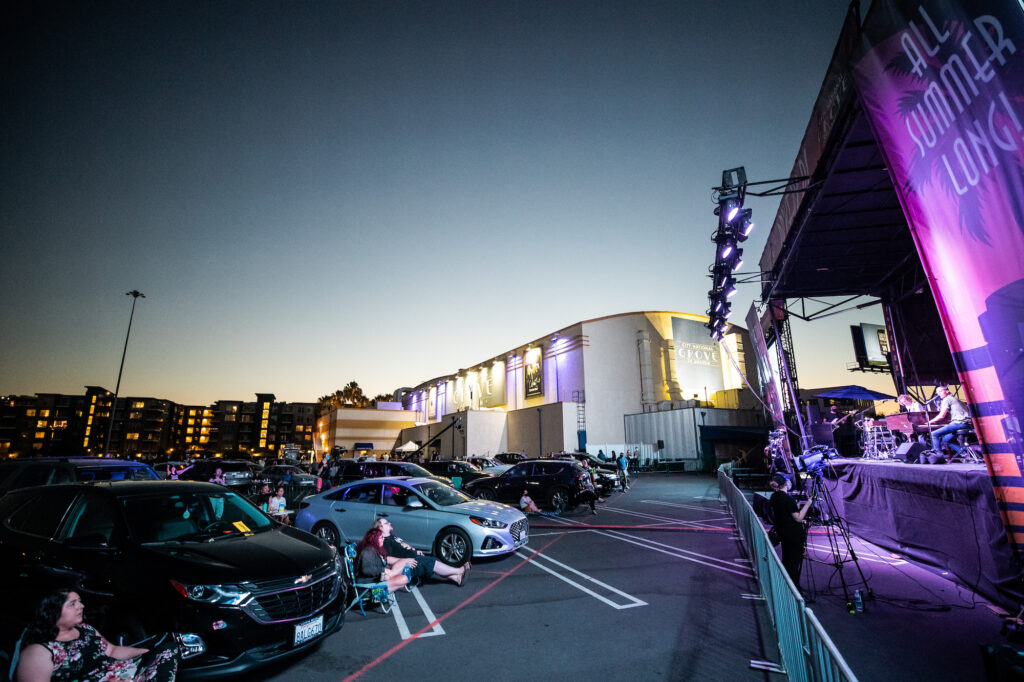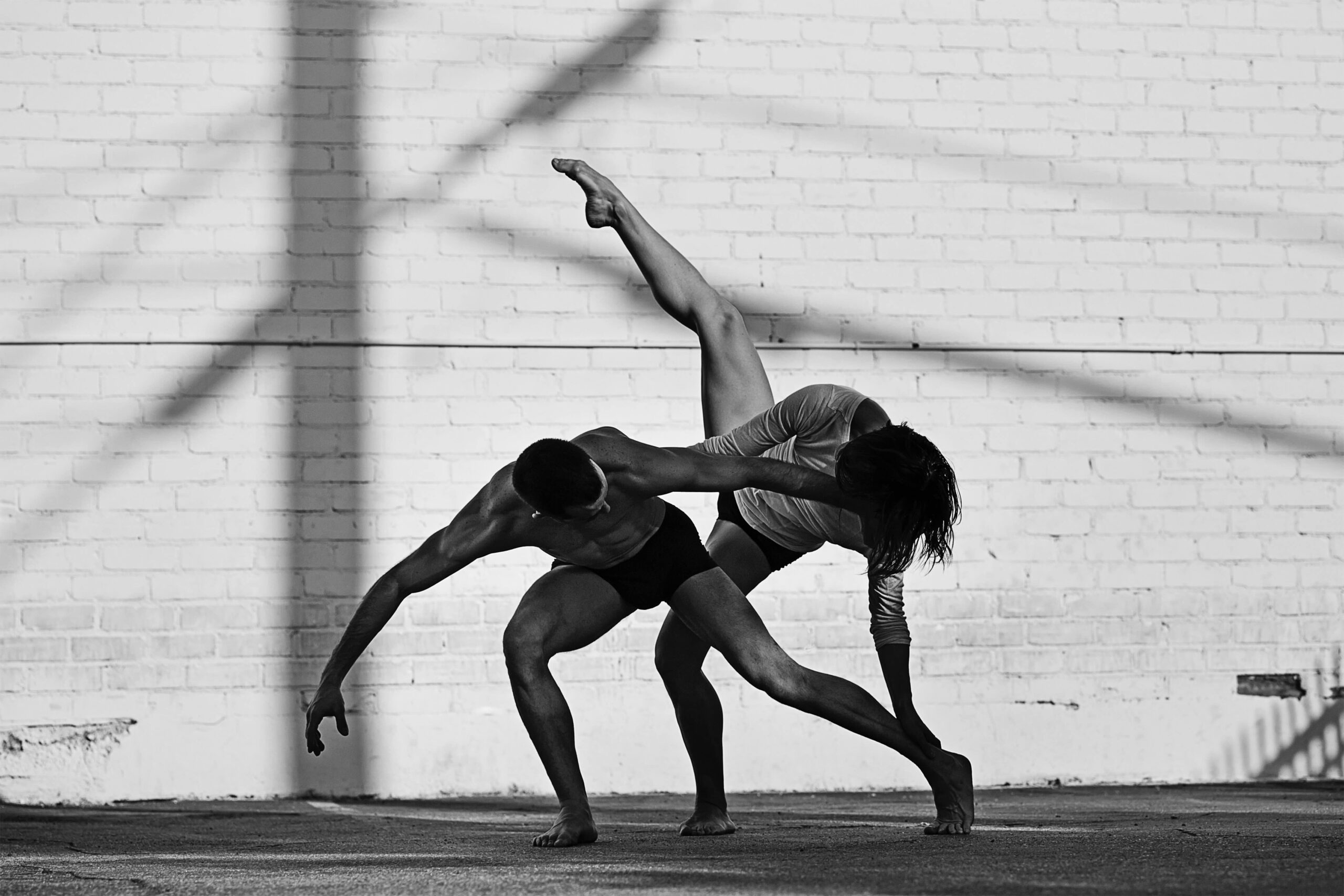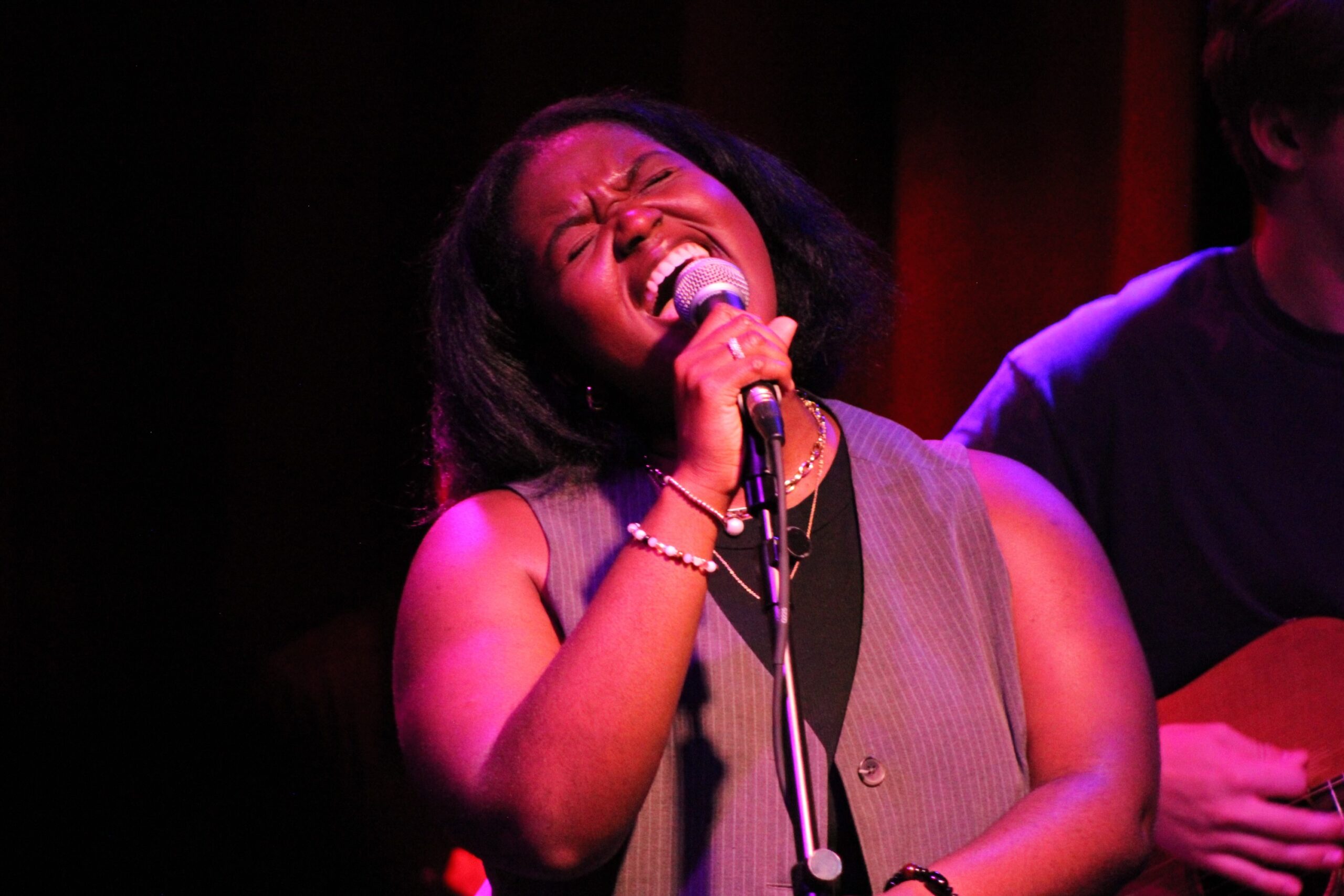Alternative-rock artist Andrew McMahon headlines the first Drive-In OC event in July at City National Grove of Anaheim. [Credit: Steve Thrasher]
(RIVERSIDE, Calif.) — The next time you see a concert, it’s more likely to be in your Volkswagen than a venue.
COVID-19 took a wrecking ball to the live music industry, which has been working to adapt its business model to a world in which nearly every aspect of the experience threatens pandemic safety. It’s no time for shoulder-to-shoulder contact, singing in closed spaces, or sweaty lead singers surfing the crowd.
Drive-in concerts have emerged nationwide as a step beyond livestreams and back into the real world. These shows take advantage of large parking lots and the ability of cars to shield concertgoers from one another and the band performing on stage. The setup can’t replicate the pre-pandemic concert experience exactly, but organizers knew they had to evolve.
“When COVID first hit, we started doing virtual shows and we started researching,” said Vanessa Kromer, vice president of communications for Nederlander Concerts. “Some venues, mainly in Europe, were creating these drive-ins, so we tried to figure out the finances, what it would take, the infrastructure.”
Nederlander is producing Drive-In OC at City National Grove of Anaheim, among other drive-ins. The Orange County series kicked off in July, and this month it will host comedian Iliza Shlesinger, musician Ziggy Marley, and DJ Kaskade.

Alternative-rock artist KT Tunstall opens a Drive-In OC event in July at City National Grove of Anaheim. [Credit: Steve Thrasher]
Accessed by QR code, the app facilitates the delivery of food, drinks, and merchandise to the 150 square feet of space allotted to each of the 286 vehicles permitted in the lot. There’s no roaming, though, and masks are required for restroom trips managed by a virtual queue in the app.
“We’ve gotten it to a really great place and worked out a lot of the kinks,” Kromer said. “Artists are really enjoying it. [Some bands have been] wary of doing any drive-ins, but, at the same time, this is their livelihood. This is what they love doing.”
Nederlander found an early partner in alternative-rock artist Andrew McMahon, who was eager to help Drive-In OC launch. His three drive-in shows in July grossed more than $170,000 plus revenue from more than 4,000 livestreams, according to Nederlander, with a portion of proceeds benefiting the Dear Jack Foundation, McMahon’s youth cancer charity. That figure is 50% higher than what an indoor show would typically gross at City National Grove, she said, though drive-in prices are higher because tickets are sold per car, not per individual.
Kromer said drive-in shows will continue for the foreseeable future as “a stopgap situation” that creates work for people across the industry and an experience unique to this time.
Though concertgoers are buying tickets for the drive-ins, some still miss the real thing.
“Part of me knows I’ve saved thousands of dollars on tickets and lodging, but I miss going to see music live,” said Los Angeles resident Lexi Stoczko. “I miss connecting with new people and planning an outfit and planning the night — or a weekend or a trip — with your friends.”
Drive-ins, too, may lose their novelty, and the industry will adapt again. Some hotels have started hosting concerts in which guests can watch bands from their balconies.
For the time being, drive-ins provide a path for live entertainment to return.
“If you really enjoy the band and you’re in the moment, I think you still feel that [connection],” Kromer said. “There’s a little bit of the lack of community. Then again, people are honking their horns, and if the artist is really engaging with the audience, you can completely immerse yourself in the experience, take a break from all that’s happening in the world, and just enjoy it.”


